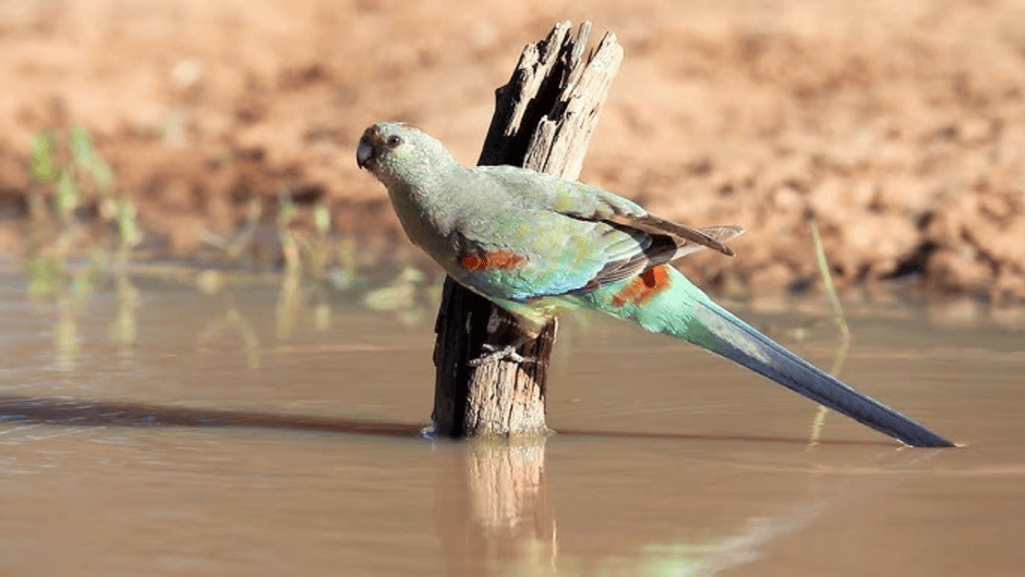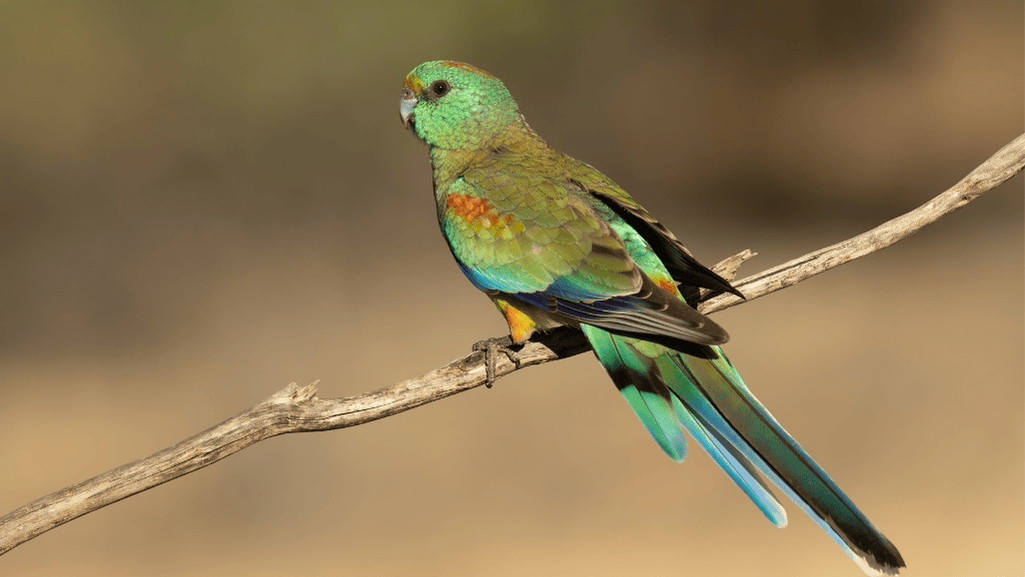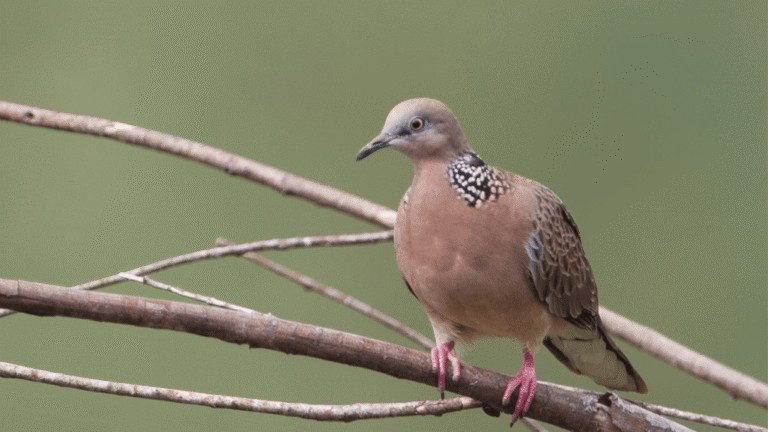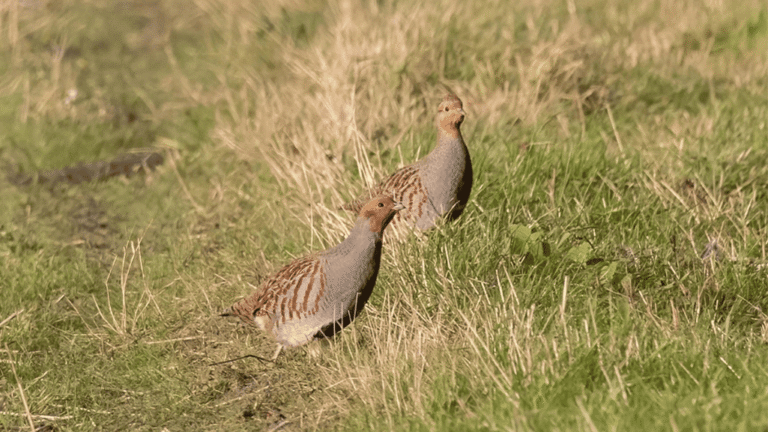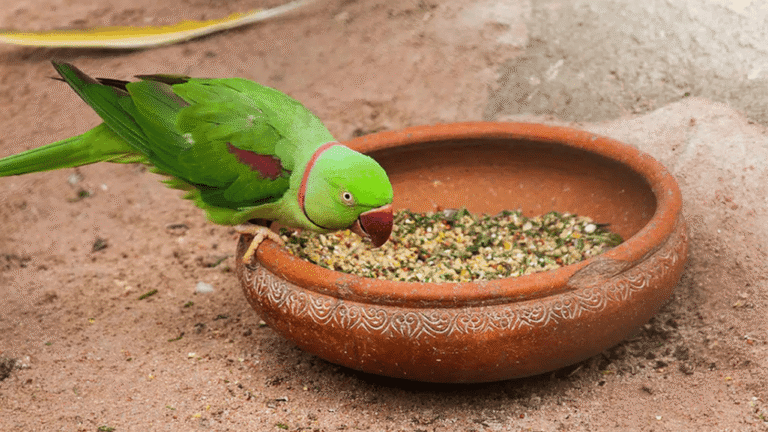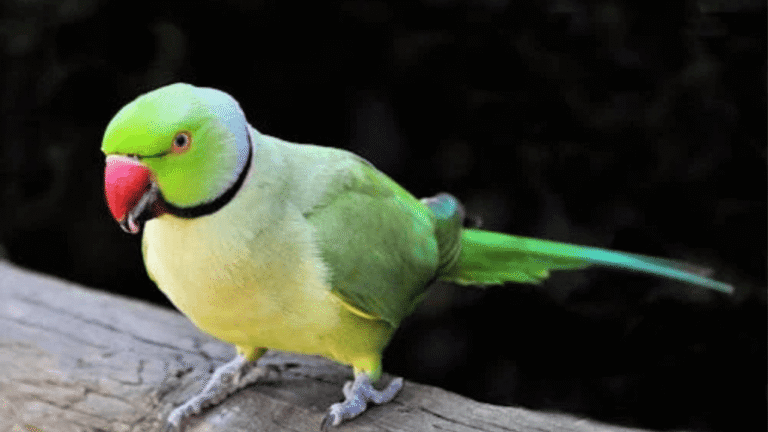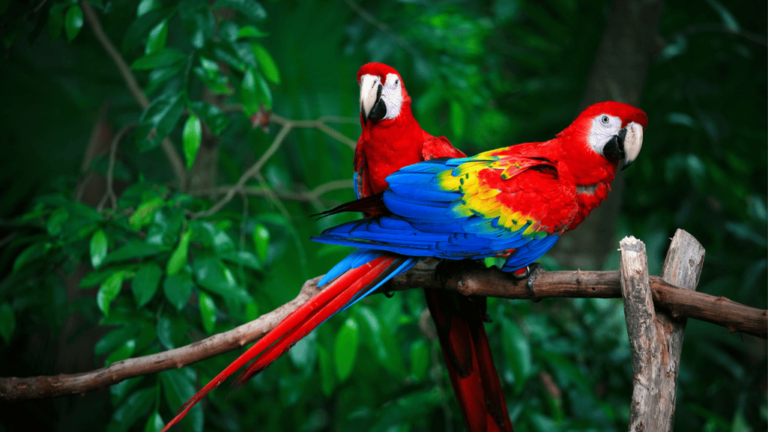Welcome to the world of the Mulga Parrot, a colorful bird from Australia. Known for its bright colors and unique behavior, the Mulga Parrot is a standout among Australian parrots. They live in dry areas and have interesting social habits. Their diet includes seeds, flowers, fruits, and insects, showing how they adapt to their environment.
Their home is filled with acacia and eucalyptus trees. While their migration patterns are not well understood, they are seen as either staying in one place or moving around. Yet, they face big challenges that highlight the need for strong Mulga parrot conservation efforts.
To learn more about these beautiful birds, check out aviculture insights on the Mulga Parrot. Here, bird lovers can find out about their care, daily lives, and more.
Key Takeaways
- The Mulga Parrot is a key part of the Australian parrots family, with special eating habits and behaviors.
- Knowing their Mulga parrot habitat is key to saving them from environmental and human threats.
- Learning about their Mulga parrot diet shows why we must protect their natural food sources.
- Conservation efforts are crucial for the Mulga Parrot’s survival, thanks to research and hard work.
- There’s a lot of bird information on these green wonders for those who want to learn and help protect them.
Introduction to the Mulga Parrot
The Mulga Parrot, known as Psephotus varius, is a colorful bird found in Australia’s dry lands. It stands out for its bright feathers and ability to live in tough environments. This parrot is medium in size and very adaptable.
This bird is found in southern Australia. It lives in places that are hard for other birds to survive. Mulga parrots eat seeds, fruits, berries, and insects, showing their ability to adapt to different food sources.
To understand the Mulga Parrot, we must look at how it behaves. They are most active in the early morning and late afternoon. They rest during the hottest part of the day. They forage on the ground but can quickly fly up into trees if needed.
Mulga Parrots are loved by bird watchers and conservationists. They can live over 12 years, showing their ability to thrive in harsh conditions. Their bright colors and interesting behaviors make them special.
The Mulga Parrot is not considered endangered, but it is protected under CITES Appendix II. This means their trade is regulated to help ensure their survival. Learning about Mulga Parrots helps us appreciate and protect these birds and their habitats.
Seeing a Mulga Parrot is a highlight of any birdwatching trip in southern Australia. They are a symbol of the beauty and diversity of Australia’s wild areas.
Physical Characteristics of the Mulga Parrot
The Mulga Parrot is an exotic bird from Australia. It catches the eye with its colorful plumage and interesting avian traits. Known as an Australian bird with a conservation status, it shows unique physical traits. These traits vary between genders, showing the complexity of bird care and observation.
Colorful Plumage and Distinctive Markings
The Mulga Parrot’s most striking feature is the male’s bright colors. Adult males have an emerald green body with a yellow band on their forehead and red patches on their crown and thighs. Their wings have a deep blue edge, making them eye-catching and helping in attracting mates.
This colorful display is not just for show. It plays a key role in their survival and breeding in the wild.
Sexual Dimorphism: Males vs. Females
Sexual dimorphism is clear in the Mulga Parrot. Females are less colorful, with olive-brown on their head and chest and a pale green belly. These colors help them blend in and protect them from predators, especially when they’re nesting.
The difference in color between males and females makes it easier for birdwatchers and researchers to tell them apart. This is helpful for studying their behavior and ecology.
| Characteristic | Male | Female |
|---|---|---|
| Head Color | Emerald Green with Yellow Band | Olive-Brown |
| Body Color | Turquoise-Green with Red Patches | Primarily Brownish-Green |
| Wing Edge | Dark Blue | Similar to body but duller |
The Mulga Parrot’s stunning looks and natural traits show the diversity of Australian birds. They need our dedicated efforts to protect them. Knowing about bird care and physical characteristics helps us care for and protect this exotic bird.
Understanding the Mulga Parrot Diet
The mulga parrot diet is fascinating, showing how these birds adapt to Australia’s dry lands. They mainly eat seeds from grasses, shrubs, and trees. These are common in their native habitats. They also eat flowers and sometimes insect larvae, which are key for their survival.
In captivity, mulga parrots need a diet that’s as varied as their natural one. They should eat aviary diet seeds made for small parrots. Add fresh fruits and veggies to their meals. Sprouting seeds and live insects like mealworms are good for them, especially when they’re breeding.
Knowing what mulga parrots should eat is more than just matching their wild diet. It’s also about making them forage naturally. Giving them native Australian flowers like eucalyptus blossoms helps them behave like they do in the wild.
| Food Category | Description | Benefits |
|---|---|---|
| Seeds | Diverse seeds from grasses, shrubs, and trees | Provide essential fats and minerals |
| Fruits and Vegetables | Fresh, ideally organic varieties | Source of vitamins and hydration |
| Floral Elements | Eucalyptus blossoms, other native blossoms | Encourages natural foraging and provides enrichment |
| Live Insects | Mealworms, termites offered occasionally | Additional protein source, beneficial during breeding |
The mulga parrot diet shows the complex relationships in their native habitats. It’s crucial to give them a balanced diet, whether in the wild or in captivity. This is key for their health and conservation.
The Natural Habitat of the Mulga Parrot
The mulga parrot habitat covers the arid and semi-arid areas of Australia. These birds live well in tough environments. Learning about their native habitat helps us understand their needs. It also makes birdwatching more exciting for those who want to see them in their natural habitat.
Arid and Semi-Arid Regions in Australia
Mulga parrots live in the dry heart of Australia. This includes parts of Queensland, New South Wales, and Western Australia. Their ability to survive here shows why we must protect their homes.
Common Vegetation in Mulga Parrot Habitats
Mulga parrots call woodlands and shrublands home. These areas are filled with native plants like Acacias and Eucalypts. They also have dense ground covers.
This variety of plants gives them shelter and food. They eat seeds and leaves from these plants. To learn more about how birds use their habitats, check out this article on bird conservation.
Mulga Parrot Behavior and Social Structure
Learning about Mulga parrot behavior helps us understand how these vibrant bird species cope with tough environments. They usually live in pairs or small family groups. This social structure is crucial for their survival, helping them find food and breed in harsh lands.
The way Mulga parrots eat is fascinating. They forage near their nests. This keeps them safe from predators and saves energy, since food is hard to find. When it’s time to breed, they focus on raising their young. This is vital for the parrot species to thrive in tough habitats.
| Behavior | Significance | Adaptation Purpose |
|---|---|---|
| Feeding in familial groups | Enhances survival and efficiency | Maximizes safety and resource use |
| Focused nesting site foraging | Reduces exposure to predators | Conserves energy in resource-scarce settings |
| Extended care during breeding season | Promotes offspring survival | Ensures successful breeding in challenging climates |
Mulga parrots show amazing adaptability and survival skills. Their behaviors are perfectly suited to their environments. This ensures they can survive in very specific and challenging habitats.
Breeding Habits and Reproduction
The mulga parrot breeding season starts in late winter or early summer. This timing helps them breed when food is plentiful. It’s important for feeding both adults and chicks.
Mulga parrots show unique breeding behavior during their season. They nest in eucalyptus tree hollows, close to water. This choice helps them survive better.
These hollows are not just homes. They are also lined with wood dust and chips. This makes them perfect for laying and incubating eggs.
Nesting Preferences and Egg Incubation
Females are key in the breeding season. They incubate the eggs alone. They choose and prepare the nesting site carefully.
This preparation is crucial for keeping the eggs warm. The mother’s care and the nesting conditions are vital for the chicks’ survival.
Parental Care and Chick Development
After hatching, both parents feed and protect the chicks. The chicks leave the nest about five weeks later. They still depend on their parents for survival.
The parents’ care is crucial during this time. After leaving the nest, the chicks need another three weeks to learn to survive on their own.
In good years, mulga parrots can have more than one brood. This shows their ability to adapt and thrive in tough conditions. Their breeding season plays a big role in their success.
Conservation Status of Mulga Parrots
The mulga parrot is a native bird of Australia’s dry lands. It is listed as “Least Concern” by the International Union for Conservation of Nature (IUCN). Yet, it’s crucial to keep up with conservation efforts to prevent it from becoming an endangered species.
Threats to Mulga Parrot Populations
Environmental changes are a big threat to mulga parrots. They harm the birds’ homes and food. It’s important to understand these threats to help protect them.
Conservation Efforts and Legal Protections
Conservationists focus on saving their habitats. Laws also help by controlling the trade and ownership of these birds. These conservation efforts are key to keeping the mulga parrot conservation status stable.
Mulga Parrot as a Pet: Care and Considerations
Getting a pet mulga parrot means you need to know a lot about mulga parrot care. These birds are lively and can brighten up any home. To care for them well, you need a big aviary, lots of activities, and the right food.
Bird care for a mulga parrot is special. A big aviary is key for their health. It lets them fly and prevents fights from being too close together. Add safe plants and branches for fun and to keep them calm.
| Requirement | Details |
|---|---|
| Aviary Dimensions | Minimum 30 cubic feet |
| Diet | Seeds, fruits, vegetables, and occasional live insects |
| Lifespan | 10 to 15 years |
| Behavioral Enrichment | Non-toxic branches, puzzle feeders, foraging toys |
| Social Needs | Typically housed singly; monitored socialization if multiple birds |
| Health Care | Regular check-ups with an avian vet, vaccinations as recommended |
Feeding your pet mulga parrot right is very important. They need a mix of good seeds, fresh fruits, and veggies. Sometimes, live insects are good too. A vet can help with the best food and supplements.
Having a mulga parrot is a big responsibility. You need to make their home fun, feed them well, and check their health often. This way, your bird will be happy and healthy at home.
Seasonal Movements and Migration Patterns
Learning about the mulga parrot seasonal movements is fascinating for bird watching fans. Unlike many birds, mulga parrots don’t migrate. Instead, they move based on their arid habitat’s conditions.
Understanding Nomadic Behaviors
Mulga parrots stay in one place most of the year. But, they move around a lot based on rain and food. This helps them find good places to eat and breed.
Studies show that these birds don’t spend much time exploring. They make quick decisions about where to go and what to do. This is because they can easily find what they need.
Environmental Triggers for Movement
Rain and food are the main reasons mulga parrots move. When it rains a lot, like after a drought, they go to new places. This helps them survive and breed better.
They move more when there’s plenty of food. For example, in the Great Western Woodland during spring. This is important for their survival and breeding.
It’s crucial to keep watching and studying these birds. For more info, check out studies on the Vernal Hanging Parrot. It faces similar challenges.
| Aspect | Impact on Mulga Parrot | Example from Study |
|---|---|---|
| Food Availability | Drives local movement | Increased activity in Great Western Woodland during spring |
| Rainfall | Triggers regional exploration | Movement across mulga woodlands during wetter months |
| Heat and Drought | Affects survival and breeding | Population dynamics change post-drought in the Gibson Desert |
Vocalizations and Communication
The Mulga Parrot, a colorful parrot, has many sounds that help them live and interact. These sounds are important for avian enthusiasts and scientists who study bird communication.
The Variety of Calls and Their Purposes
Mulga parrot vocalizations have different uses. They use sounds for mating, warning of danger, and talking to each other. These sounds change, from soft chirps in flight to loud calls during mating.
Interpreting Mulga Parrot Sounds
Understanding these sounds helps with conservation. By listening to these calls, avian enthusiasts can enjoy watching these colorful parrots. They also help keep an eye on the parrots’ health and how well they are doing in the wild.
| Vocalization Type | Purpose | Description |
|---|---|---|
| Mating Call | Attract mates | High-pitched, prolonged, and often repeated |
| Alarm Call | Signal danger | Sharp, quick, and loud to alert the flock |
| Social Call | Maintain flock cohesion | Soft, melodious warbles or twitters |
These mulga parrot vocalizations are crucial for understanding their survival and success. They make these birds a great subject for studying how birds communicate.
Mulga Parrot Sightings and Birdwatching Tips
For bird lovers, finding the Mulga Parrot in the wild is a thrilling quest. Birdwatching is growing in popularity. Here are some tips to help you enjoy mulga parrot sightings.
The Mulga Parrot lives in scrub-lands like Riverland and Mungo National Park. These places have the right plants for them to live and breed. They are great spots for birdwatchers.
- Time Your Visit: The best times are early morning or late afternoon. Parrots are most active then.
- Stay Quiet and Patient: Parrots get scared by loud noises. Being quiet and careful is important for a good birdwatching trip.
- Use Binoculars: Binoculars help you see the Mulga Parrot’s colors and actions from far away. They make your experience better without disturbing the birds.
Both new and seasoned birdwatchers should consider birding tours. These tours are led by experts who know the Mulga Parrot’s habits and habitats. They also teach about other interesting birds that live there.
Here’s a look at how different bird species are found in similar places in Australia:
| Region | Mulga Parrot | Other Birds |
|---|---|---|
| Riverland and Mungo National Park | Common | Australian Ringneck, Zebra Finch |
| Alice Springs Area | Occasional | Red-tailed Black Cockatoos, Galah |
| Wet Tropics, North Queensland | Rare | Over 450 species including endemic species |
Whether you’re exploring on your own or on a birding tour, seeing the Mulga Parrot is rewarding. Remember: Always respect nature and keep the environment safe. This way, birds will continue to delight birdwatchers for years to come.
Conclusion
We’ve learned a lot about the Mulga Parrot and why it’s so important to save them. Their bright colors remind us of the amazing variety of life in their home. These birds are very good at living in dry places, but they still face big dangers.
All birds like the Mulga Parrot can get sick, especially from a virus that affects their beaks and feathers. Australia is a key place for studying this virus. Knowing how different these birds look helps us understand how to protect them better.
We need to work harder to keep their homes safe. Watching birds and teaching others about them can help. The Mulga Parrot’s unique looks and ways of living need our help to survive. It’s up to us to make sure these birds keep flying in the skies of Australia.




